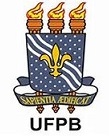THE BEAUTIFUL (IN)VISIBLE OF THE ALBINA CHILD IN CHILDREN'S LITERATURE
DOI:
https://doi.org/10.46906/caos.n27.60681.p125-137Keywords:
difference, beauty, inclusive children's literature, albino peopleAbstract
The text is a reflection on the meaning of the beauty contained in the books of inclusive children's literature: Sabrina: a menina albina, by the author Celina Bezerra; Pedrinho: o menino albino of Patrícia Prado and A menina sem cor, by Fernanda Emediato. For this, we use some taunts related to beauty, contained in the book: O fantástico mistério de Feiurinha, by Pedro Bandeira. We aim to present to new researchers alternative possibilities of looking at beauty in reference to albino children. In a world marked by diversity, there is no single beauty, but several. Albino people are white with light-colored eyes, but in the context of the media are discriminated against and marginalized. Methodologically, we conduct a qualitative analysis of the content of books in order to reflect upon subjective aspects and social phenomena related to albino people and the way they live in a world marked by prejudice. This work represents the desire to insert the themes of albinism into academic discussions, contributing to an extension of knowledge of the albino cause, in education, in health and to arouse interest in knowing who albino people are, in order to soften or extinguish prejudice against these "white people".
Downloads
Metrics
Published
Issue
Section
License
Copyright (c) 2021 Solange de Sousa Araújo

This work is licensed under a Creative Commons Attribution-NonCommercial 4.0 International License.
A Caos é regida por uma Licença da Creative Commons (CC): CC BY-NC 4.0, aplicada a revistas eletrônicas, com a qual os autores declaram concordar ao fazer a submissão. Os autores retêm os direitos autorais e os de publicação completos.
Segundo essa licença, os autores são os detentores dos direitos autorais (copyright) de seus textos, e concedem direitos de uso para outros, podendo qualquer usuário copiar e redistribuir o material em qualquer suporte ou formato, remixar, transformar e criar a partir do material, ou usá-lo de qualquer outro propósito lícito, observando os seguintes termos: (a) atribuição – o usuário deve atribuir o devido crédito, fornecer um link para a licença, e indicar se foram feitas alterações. Os usos podem ocorrer de qualquer forma razoável, mas não de uma forma que sugira haver o apoio ou aprovação do licenciante; (b) NãoComercial – o material não pode ser usado para fins comerciais; (c) sem restrições adicionais – os usuários não podem aplicar termos jurídicos ou medidas de caráter tecnológico que restrinjam legalmente outros de fazerem algo que a licença permita.
Recomendamos aos autores que, antes de submeterem os manuscritos, acessem os termos completos da licença (clique aqui).
















